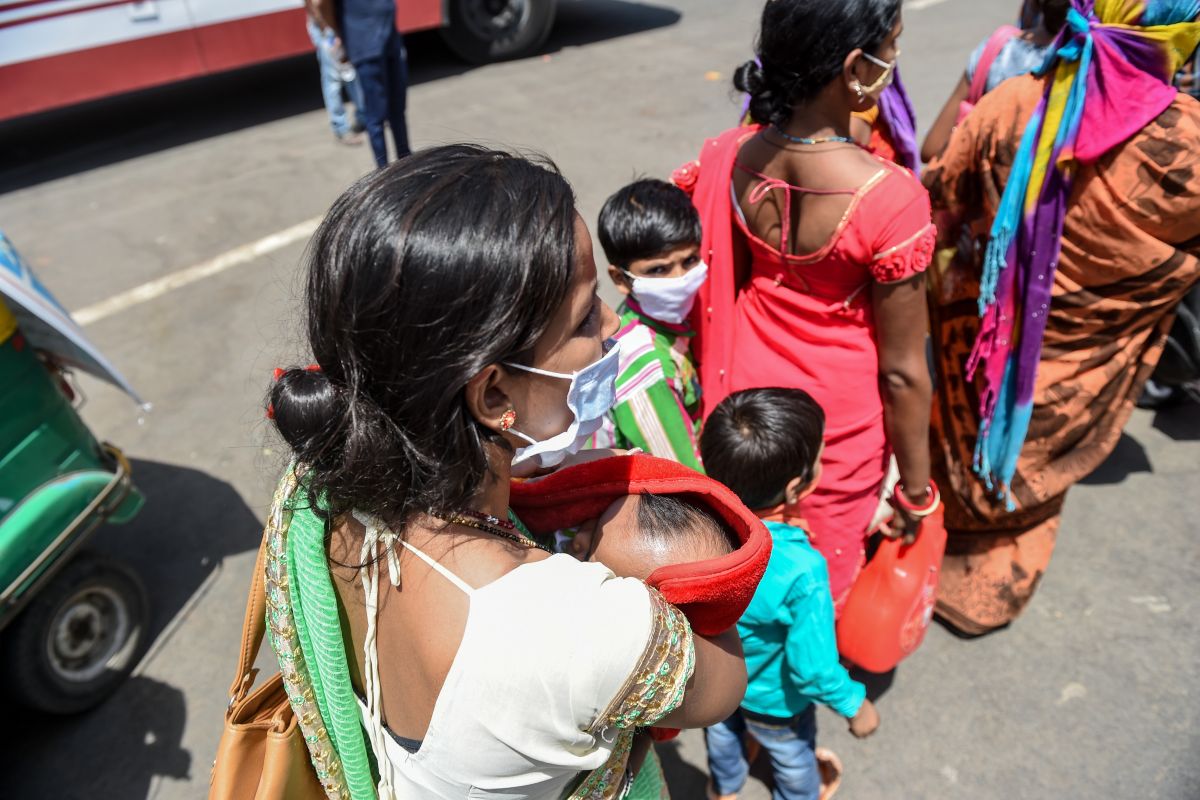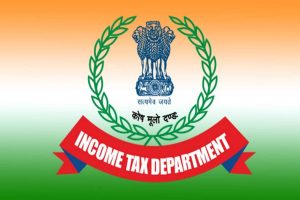While the country is moving with the twin strategy of lockdown in hotspots and gradual relaxation in rest of the areas to restart the economy, the worrying fact for us is that fourteen cities that drive our economy contribute about 70 per cent of the cases. Health ministry officials have emphasized stringent monitoring of the listed containment and red zones in areas located in Maharasthra, Tamilnadu, Gujarat, Delhi, Madhya Pradesh, West Bengal and a few other states. Megacities like Mumbai, Ahmedabad and Delhi are emerging as epicenters of disease and a source of concern for the obvious reason of life and livelihood conflicts.
From Wuhan to New York and Sao Paolo to Mumbai, cities across the globe appear as the hotspots of the pandemic. The virus is essentially anti-urban. Medical scientists and a section of urban planners argue density in cities is the key factor underlying the surge. According to Dr. Steven Goodman, epidemiologist at Stanford University, density is the real enemy in cities like New York, Chicago and New Jersey.
Advertisement
People interact with people all the time and mass transit, parks, museums, cafes and multi-storied condominiums are the catalysts of rapid spread. Highest mortality in New York is the best evidence in favour of the argument. But there are other opinions too. Urban theorist Richard Florida opined multiple factors are responsible for the spread – population size, age, education level, inequity, religiosity, occupation and level of social capital.
All these affect the vulnerability or resilience of city populations. Many hyper-dense Asian cities – Singapore, Seoul, Hong Kong and Tokyo – have succeeded in containing the outbreak with aggressive testing and tracking of high vulnerability cases. Closer scrutiny of New York reveals that compared to high density Manhattan borough, Bronx, Queens and Brooklyn are less dense but inhabited by black Americans and Latino people and witnessed higher per capita infection and mortality.
These are the sites with high incidence of urban poverty, higher exposure to air pollution by US standards, poor access to basic amenities and near absence of expensive health insurance system. Since, a majority of people here are workers in essential services, they are not in a position to comply with social distancing protocols.
Former President Barack Obama remarked the pandemic laid bare the deep-seated problems in US society – from massive inequality to racial disparities and a lack of basic healthcare for people who need it. What is happening in Indian cities? ICMR is planning to estimate the prevalence of community transmission in the top ten hotspot cities. These include Mumbai, Delhi, Pune, Ahmedabad, Thane, Indore, Jaipur, Chennai and Surat and Agra. Among them Mumbai, Delhi, Pune, Ahmedabad, Chennai and Surat are connected more with the global economy and are prime investment destinations.
Ahmedabad, Surat and Indore got clean city awards under Swachh Survekshan of Government of India. What is fundamentally wrong with them? Any megacity in India has several cities within it and they co-exist with asymmetrical socio-economic and infrastructure conditions. Geography of the spread in Mumbai and Ahmedabad reveals precarious living conditions of low-income neighbourhoods, slums and informal settlements which are responsible for the exponential rise of cases.
It is true that Mumbai has density similar to that of Manhattan, but crowding and poor infrastructure access of urban poor triggers community transmission in slums and lowincome settlements. Forty-one per cent of the city’s population lives in resource poor and infrastructure deficient situations. Fifty per cent of the slums are not acknowledged by city authority and are unable to register their claim for basic services.
Asia’s largest slum Dharavi and informal settlement Shivaji Nagar became the hotspots of the pandemic. Due to acute land scarcity, six to eight persons share a room of 100 sq. ft. making social distancing an unattainable goal. Forty per cent of households do not have toilets and one community latrine is often shared by more than 100 families. Frequent hand-washing is wishful, since most households could access much less water than the WHO-prescribed norm in non-emergency situations.
In Shivaji Nagar poor people pay ‘poverty premium’ to purchase drinking water during summer months. In 2006, with reference to disaster Katrina in United States, geographer Niel Smith in his article entitled There is no such thing as natural disaster wrote – “its causes, people’s vulnerability, society’s preparedness and the difference between who lives and dies is to a greater or lesser extent a social calculus.”
Indian megacities provide ample evidence to support Smith’s hypothesis. The issue is not the city or the density. It is about the kind of city and the density of the rich or crowding of the poor. In Mumbai analogous to density, land price of the downtown area is comparable to some areas of Manhattan. It is no wonder that geographically forty-one per cent of Mumbai’s population (slum) has to be restricted in mere seven per cent of habitable area of the city.
Most slum renewal schemes resorted to multi-storey pigeonholes using amnesty schemes like higher Floor Area Ratio and transfer of development rights on a lesser land area to make them commercially profitable for developers with complete disregard to mandatory open spaces and public health attributes. Many of these vertical slums are sites of pre-existing infectious disease and became the hotspots of community transmission due to non-compliance with building codes and facility provisions.
Industrialist Ratan Tata expressed grave concern at the lacklustre approach to slum renewal in the city and suggested redefining housing and infrastructure norms to ensure better quality of life for slum-dwellers. According to the New World Wealth Report 2019, Mumbai is the proud representative of India among world’s first twenty wealthiest cities. It is evident that land and basic amenities are highly contested in the city and their skewed distribution is the reason of vulnerability of poor settlements.
Cities like Delhi, Ahmedabad and Kolkata are no exceptions. The economic structure and social ecology influence the nature of inequity and pre-existing vulnerability and enhance communities’ risk possibilities. Ahmedabad’s mortality rate in the pandemic is almost double the national average. Despite stringent lockdown measures, congested eastern part and the old city continue to be the epicentres.
Religious polarisation in the city is at its peak. Infection rate is high in the slums and lowincome settlements in Muslim dominated Jamalpur, Danilimda, Dariyapur and scheduled caste populated Behrampura. Congested housing, large family size, economic and social deprivation, regressive beliefs and practices, inadequate sanitation and water supply and lack of open space led to the ongoing crisis.
Mistrust between people and administration is compounding the problem further. The impacts of the global pandemic are still being understood, but it does seem clear that this crisis calls for reorientation of planning practices in our cities. The 19th-century cholera epidemic in London sparked introduction of modern urban sanitation systems. To control respiratory disease in overcrowded slums in Europe during industrialization, housing regulations were introduced to ensure natural light and ventilation.
Deadly bubonic plague swept through the city of Bombay in late 19th century; subsequently Bombay and Calcutta Improvement Trusts were created to restore public health and hygiene in cities. The focus continued through independence till late 1980s. With the onset of globalisation and neo-liberal reform in the nineties, privatization of infrastructure became the new normal and replaced the public purpose of cities.
Welfare objective was addressed obliquely while economic growth and land monetization overshadowed resilience of cities against disease and disasters. So, what is the way forward? This is a structural issue and needs a paradigm shift in policies. Urban development strategy since the 1990s has led to global connectedness and first worlding of Indian urban centres with hyper-commodification of land, marginalisation of the poor and increased informality of labour and life.
Present pandemic has exposed lack of urban safety net and extreme vulnerability of these people. This entails a radical departure to alter the narrative of a city from primarily as an engine of economic growth towards an inclusive entity. And mega project centric urbanization towards delivery of basic public goods – from sewage to drinking water and housing to public transport – commensurate with the pace of social and economic transformation is vital.
Tools like social housing and inclusive zoning can restore the propoor orientation and incorporate their priorities in future city development. On the institutional front, the 74th constitutional amendment has successfully enforced municipal elections in the country, but other provisions to devolve authority and development responsibilities are long awaited in most of the states. Experience of southern states of Kerala and Karnataka proved elected panchayats and municipalities are successful in responding to the outbreak.
Since, principle of subsidiarity is most effective to ensure resilience at the grassroots, empowering local self-government should be our immediate priority. The question remains, are we going to reset our city development strategies in the context of the pandemic or let our urban future drift?
(The writer is Professor, Department of Architecture, Town and Regional Planning, Indian Institute of Engineering Science and Technology (IIEST), Shibpur)











